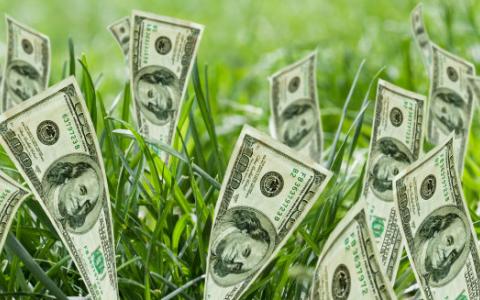
(Bloomberg) Everyone’s got an opinion on buybacks, from executives and politicians to Twitter users. Now, in a year when it was once thought they’d reach $1 trillion, a louder voice is being heard: the market’s.
While the efficacy and even purpose of buybacks are the subject of endless argument, if you believe they’re meant to enhance returns, lately they’re falling short. Baskets of stocks with the highest cash-return rates have been trailing the market in recent months.
Companies may have noticed; repurchase rates are falling. Maybe it’s that valuations are stretched, though price-earnings ratios were higher a few years ago. As for buybacks losing their bang, that could reflect changing tastes for how companies use cash. Anything from a growing preference for capital investment to aversion to piling on debt to pay for them.
“It really depends on the circumstances at the time,” said Mike Thompson, a managing director in Goldman Sachs Asset Management’s Global Portfolio Solutions group, who considers buybacks, dividends, takeovers and capex as the main ways companies spend extra money. “They’re looking at what makes the best sense for their shareholders, and they’re going to pick one of the four options of how to deploy capital.”
While companies that focused on returning cash to shareholders through dividends and buybacks have beaten the market over time, they haven’t been lately. Before Friday’s sell-off, a Goldman Sachs basket of 50 stocks with a median total cash return more than double the S&P 500 had trailed that index for seven straight weeks, the longest streak since being created six years ago. It has returned 12.3% annually since it was created in October 2013, compared with 11% for the benchmark.
By design or otherwise, executives have been a little less infatuated with the practice. Companies in the second quarter cut back on buybacks for the first time in two years, data compiled by S&P Dow Jones Indices show. Meanwhile, they increased dividend payouts and business investment.
Another place where buybacks are showing less efficacy is on the earnings line. Bloomberg Intelligence estimates share repurchases added half a percentage point to S&P 500 EPS growth in the second quarter reporting season, below a quarterly average of 1.3% over the last five years.
The shortfall is coming at a time when firms could use the boost as investors bemoan a potential contraction in earnings.
“Buybacks are not boosting EPS much this year, particularly in comparison to the last period of earnings weakness,” Bloomberg Intelligence strategists led by Gina Martin Adams wrote last month. “Buybacks are falling a bit short in sheltering index EPS from evident weakness in 2019, compared with the last time index earnings fell.”
The numbers of companies that have announced new share repurchase programs has also been slipping, according to RBC Capital Markets. New buyback disclosures remain elevated on a relative basis, but they’ve slowed in recent months after a solid pickup over the last two years, suggesting “that activity is poised to moderate,” strategists at the firm including Lori Calvasina wrote in recent research.
In an analysis of language used on second quarter earnings calls, RBC found that more companies emphasized capital expenditures than they did buybacks or dividends.
To be sure, it’s not like companies have done a complete 180. They’re still scooping up their own shares and issuing dividends at levels that are historically high. Earlier this month, the unit at Goldman Sachs Group Inc. that executes repurchases for its clients saw activity pick up when stocks went south. But the latest evidence points to a change of pace, and potentially a change of heart.
The role of corporate tax reform should also be considered, according to Goldman’s Thompson, who prior to joining the firm was chairman at S&P Investment Advisory Services. In the immediate aftermath, there was a sizable cash windfall that companies had to deploy, driving buybacks to record highs. Since, that’s tempered, but repurchases still aren’t likely to fall off a cliff.
“Buybacks are a staple arrow in the quiver of companies to be able to basically optimize how they drive the most value for their shareholders,” Thompson said. “It’s legit.”



